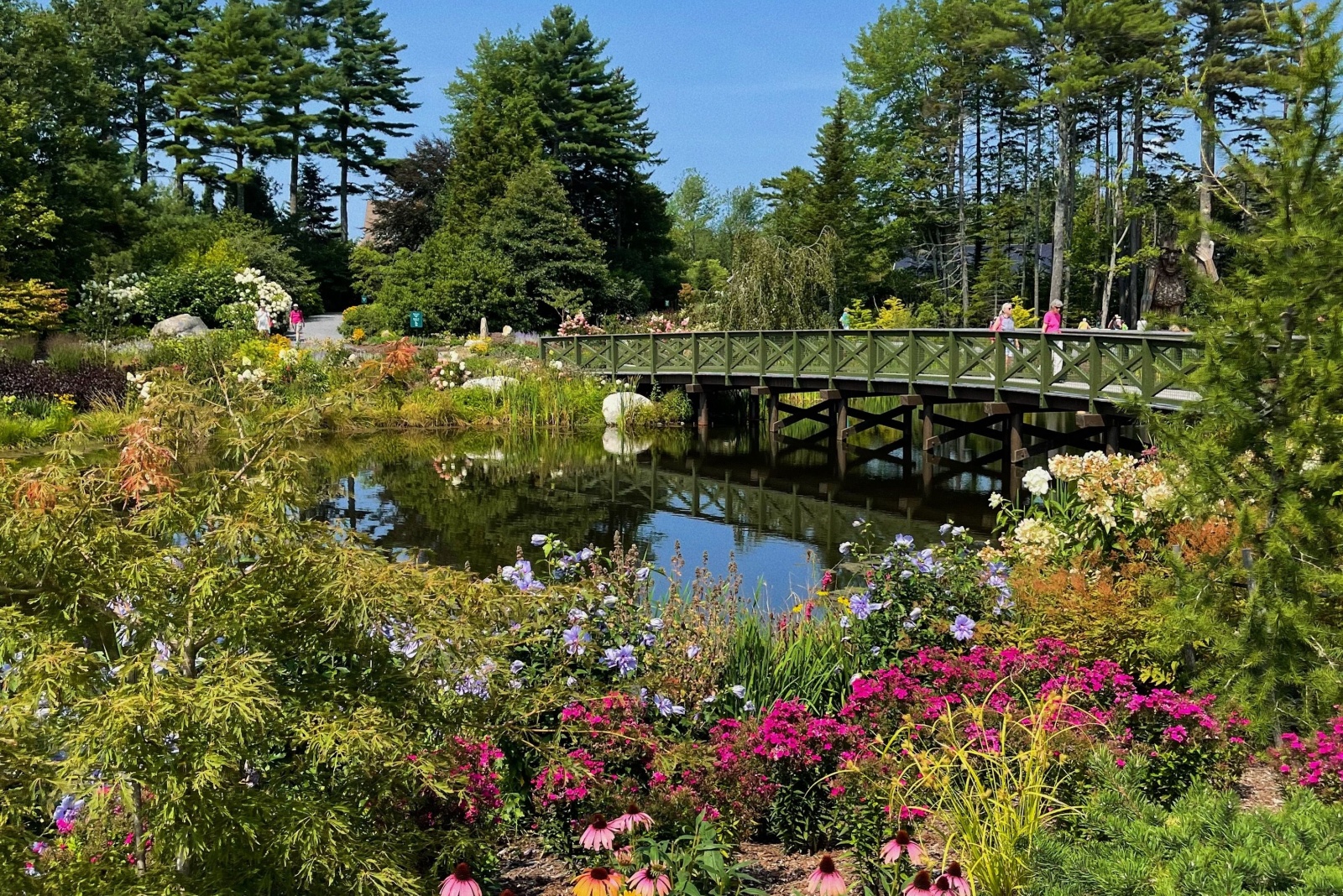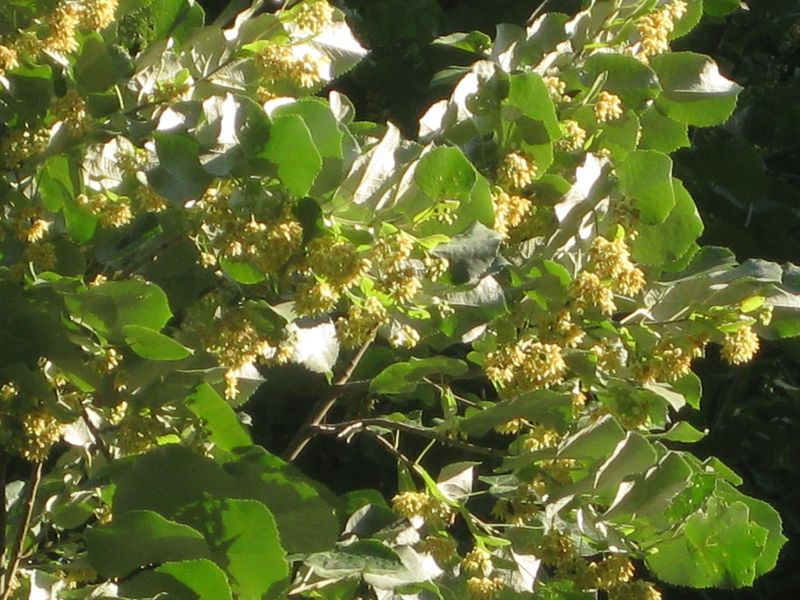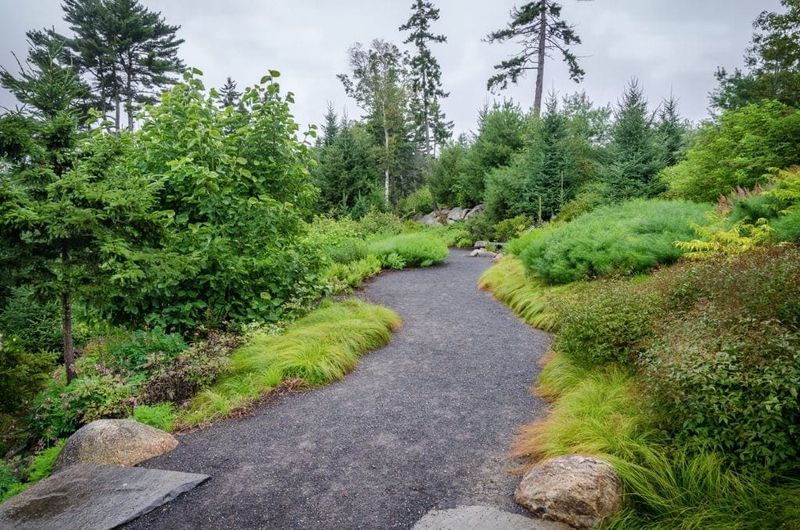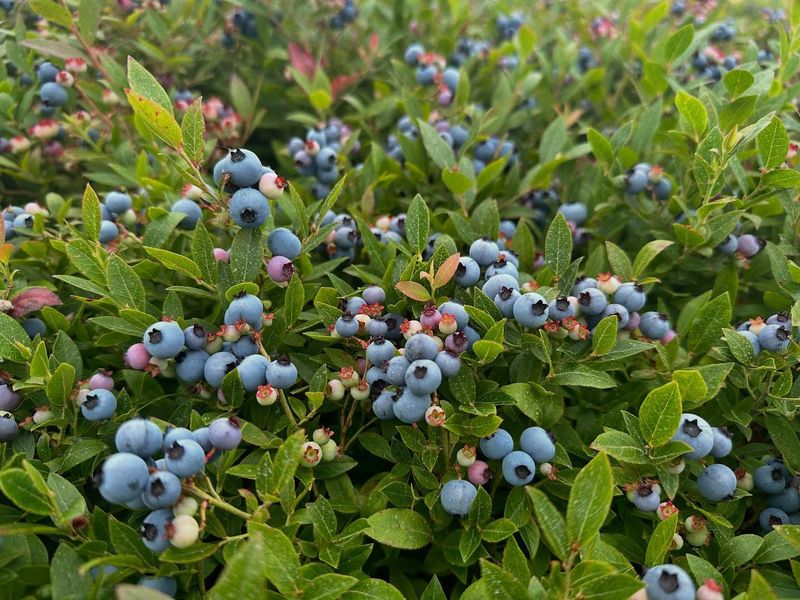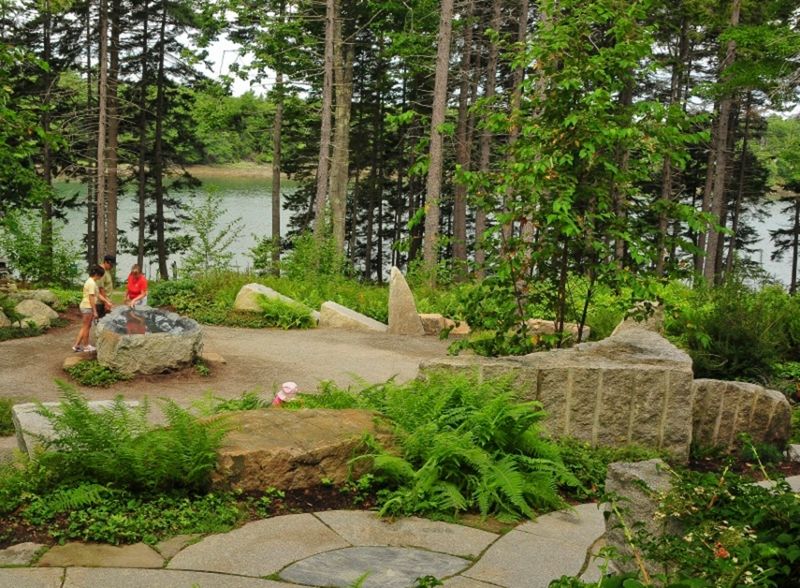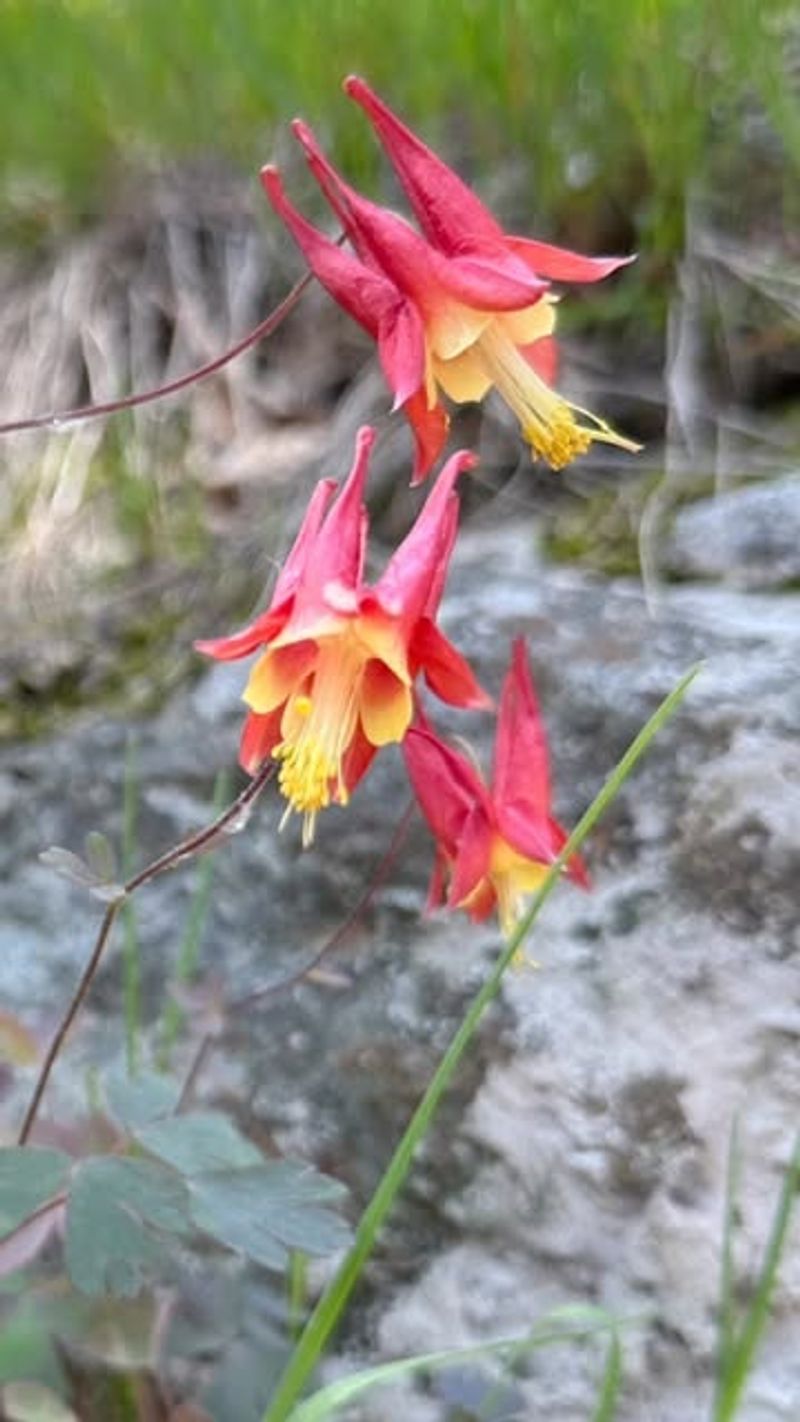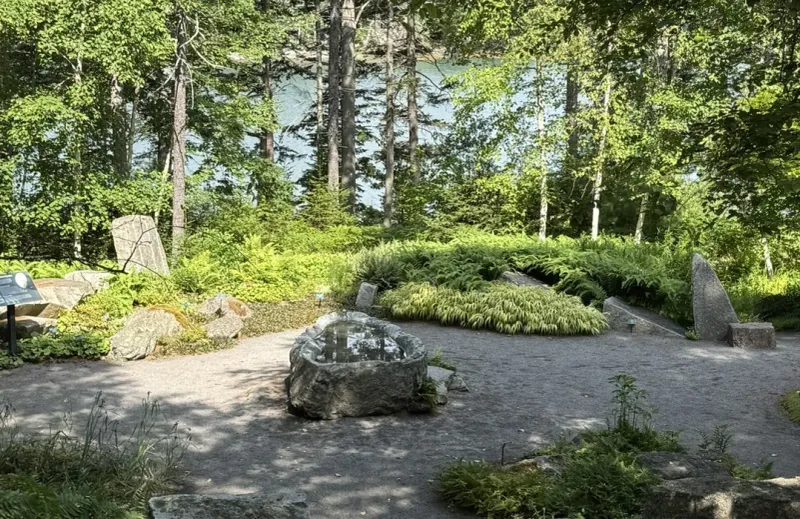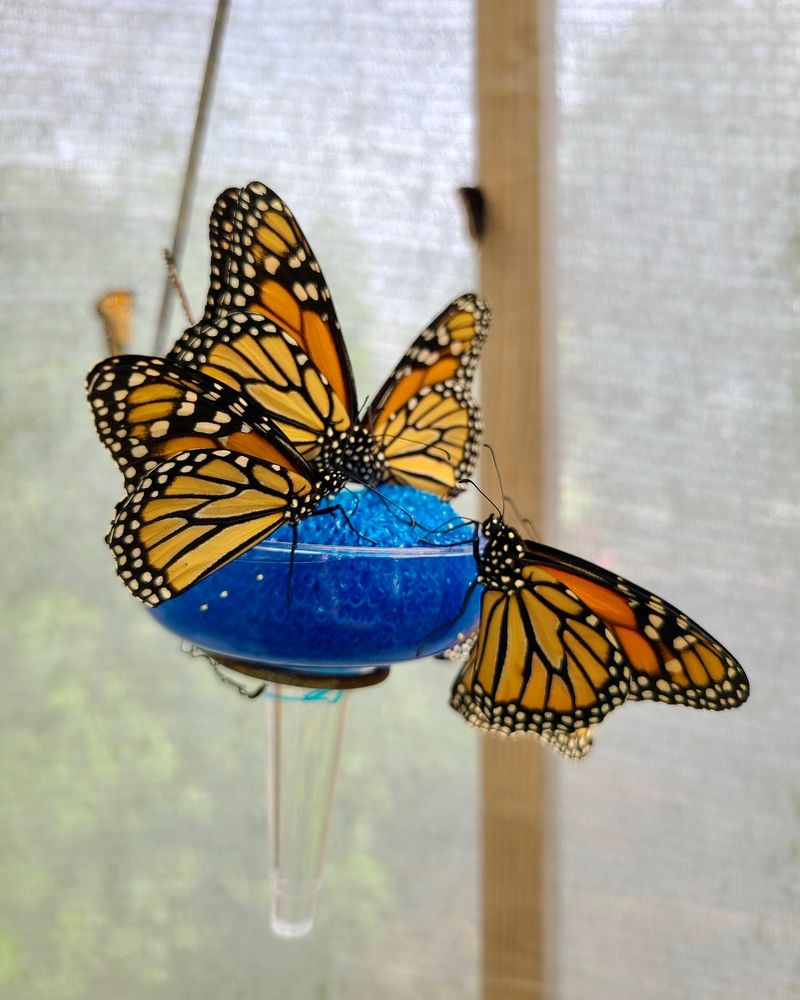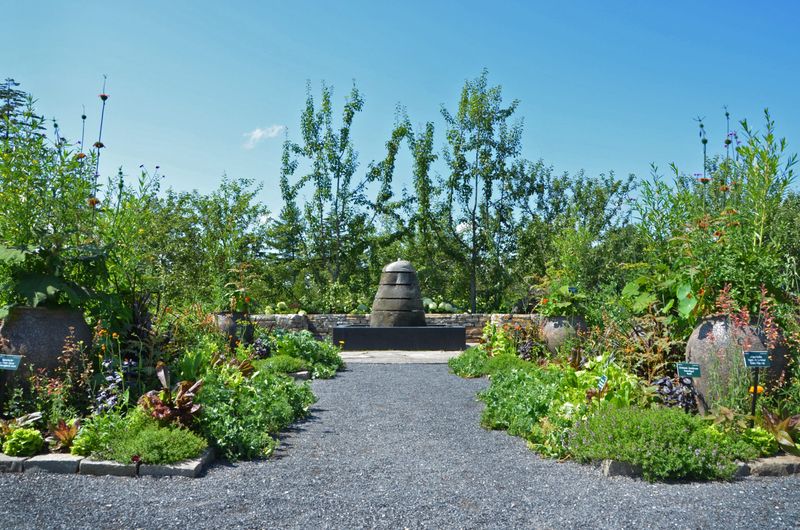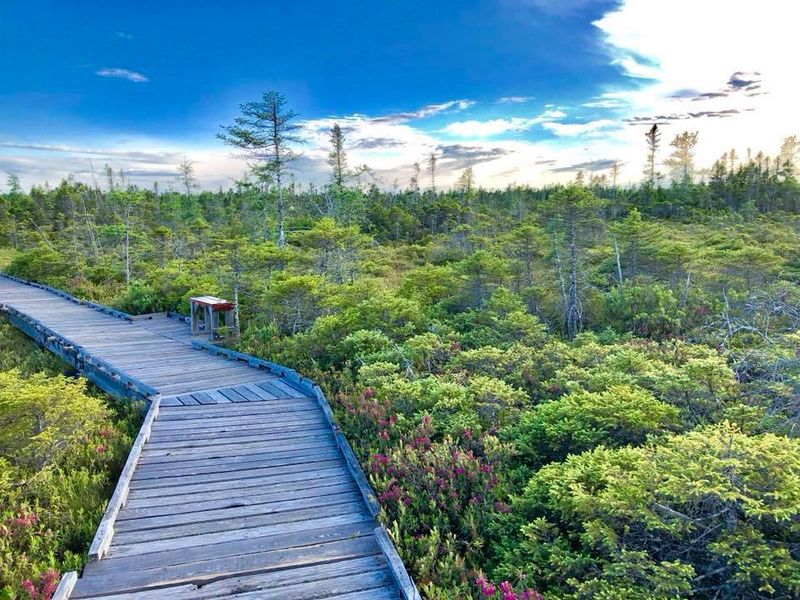Tucked along the rocky shores of Boothbay Harbor, the Coastal Maine Botanical Gardens blend wild beauty with thoughtful design. Spanning 295 acres, the landscape invites visitors into a world where native plants thrive beside sweeping ocean views.
It’s a place where nature feels both grand and intimate. Trails wind through forest groves, open meadows, and along the Atlantic’s edge, each turn revealing something new. From delicate wildflowers to towering evergreens, Maine’s coastal ecosystem comes to life in vivid detail.
The gardens feel like a quiet conversation with the land. Whether you’re a seasoned gardener or simply craving a peaceful escape, this coastal haven offers more than scenery. It’s a journey through Maine’s natural rhythms—rooted in conservation, inspired by beauty, and unforgettable in every season.
1. The Linden Allée’s Majestic Canopy
Towering American linden trees form a grand cathedral-like passage that welcomes visitors to the heart of the gardens. Their heart-shaped leaves create dancing shadows on the path below.
Summer brings fragrant yellow blossoms that attract countless honeybees. Local beekeepers often note these lindens produce some of the finest honey in the region.
Originally planted in 2007, these native trees demonstrate how formal garden design can incorporate indigenous species while creating dramatic seasonal impact.
2. Shoreland Trail’s Rocky Coastline Views
Morning fog often clings to this meandering pathway, creating an ethereal experience as you traverse the rugged Maine shoreline. Salt spray mingles with the scent of balsam fir along this quarter-mile adventure.
Granite outcroppings provide natural seating areas where visitors pause to watch lobster boats hauling traps in the distance. The trail cleverly incorporates universal design principles, making coastal access possible for all mobility levels.
Fall brings spectacular color as native blueberry bushes turn crimson against the steel-blue Atlantic waters.
3. Wild Blueberry Patches In The Woodland Garden
Carpeting the forest floor with glossy leaves, these native berries transform from delicate white bell-shaped flowers to plump indigo fruits by midsummer. Children delight in discovering these sweet treasures along the woodland paths.
Unlike their cultivated cousins, these low-bush blueberries (Vaccinium angustifolium) offer a more intense, complex flavor. Garden staff occasionally harvest small batches for special event tastings.
Interpretive signs explain how these plants thrive in Maine’s acidic soil and how indigenous peoples used them for both food and medicine.
4. Meditation Garden’s Stone Circle
Massive granite boulders, harvested from local quarries, form a contemplative space where the rhythmic sounds of ocean waves provide natural meditation music. Early morning visitors often have this tranquil spot entirely to themselves.
Between the stones, resilient bearberry (Arctostaphylos uva-ursi) creates a living carpet that changes from glossy green to rich burgundy with the seasons. Its tiny bell-shaped flowers attract native pollinators throughout spring.
From this elevated vantage point, panoramic views stretch across Boothbay’s harbor islands, creating a perfect marriage of designed space and natural landscape.
5. Eastern Red Columbine Collection
Nodding crimson flowers dance above delicate blue-green foliage, attracting hummingbirds that dart between blooms with incredible precision. Garden volunteers often point visitors toward this spring spectacle.
Unlike many garden flowers, this native perennial (Aquilegia canadensis) thrives in partially shaded rocky outcroppings that mimic its natural habitat. The garden’s microclimate allows these woodland gems to bloom nearly two weeks longer than wild populations.
Seeds from these plants contribute to the garden’s conservation program, helping restore native columbine to disturbed coastal areas throughout Maine.
6. Children’s Garden Tidal Pool Exploration
Carefully recreated tidal ecosystems allow young explorers to discover Maine’s coastal creatures without disrupting natural habitats. Small fingers delight in touching sea stars and hermit crabs under the guidance of knowledgeable garden educators.
Surrounding the pools, salt-tolerant native plants like sea lavender and beach pea demonstrate nature’s remarkable adaptations to harsh coastal conditions. Interpretive stations use child-friendly language to explain complex ecological relationships.
This hands-on area has inspired countless children to become future marine biologists and environmental stewards since its creation in 2008.
7. Haney Hillside Garden’s Woodland Symphony
Ferns unfurl their fronds beneath a cathedral of towering white pines in this shaded sanctuary that showcases Maine’s forest understory plants. Mosses create emerald cushions on fallen logs, demonstrating nature’s recycling process in action.
Trillium and lady’s slippers make brief but spectacular spring appearances, their ephemeral beauty drawing photographers from across New England. Garden staff have successfully propagated these notoriously difficult native orchids.
A gentle waterfall provides cooling mist during summer months, creating ideal conditions for moisture-loving native plants that might otherwise struggle in cultivated settings.
8. Butterfly House And Pollinator Paradise
Monarchs float gracefully among stands of native milkweed, completing their life cycle within this protected environment. Educational displays track their remarkable migration patterns and explain the garden’s participation in national conservation efforts.
Beyond butterflies, mason bees and bumblebees buzz between coneflowers, asters, and goldenrod planted specifically to support diverse pollinator populations. Garden researchers monitor which native plant combinations attract the greatest pollinator diversity.
Specially designed “insect hotels” provide nesting sites for solitary bees, demonstrating how home gardeners can support these crucial but often overlooked pollinators.
9. Burpee Kitchen Garden’s Heirloom Treasures
Heritage vegetable varieties once common in Maine’s coastal communities grow alongside native herbs in this practical demonstration garden. Weathered cedar raised beds mirror traditional Downeast gardening techniques adapted for modern accessibility.
Scarlet runner beans climb trellises made from local driftwood, while heirloom tomato varieties developed specifically for Maine’s short growing season ripen in the summer sun. Weekly harvests supply the garden’s farm-to-table café.
Interpretive displays explain how indigenous Wabanaki people cultivated the “three sisters” – corn, beans, and squash – long before European settlement.
10. Tidal Marsh Boardwalk Ecosystem
Elevated wooden pathways allow visitors to explore fragile salt marsh habitats without disturbing the delicate balance of this critical ecosystem. Binoculars stationed along the route help spot great blue herons stalking through the spartina grass.
Twice daily, incoming tides transform the landscape, bringing nutrients that sustain countless marine organisms. Interpretive panels explain how these marshes serve as natural buffers against coastal erosion and storm surge.
Salt-tolerant bayberry bushes release their distinctive spicy scent when brushed against, adding a sensory dimension to this immersive coastal experience.

